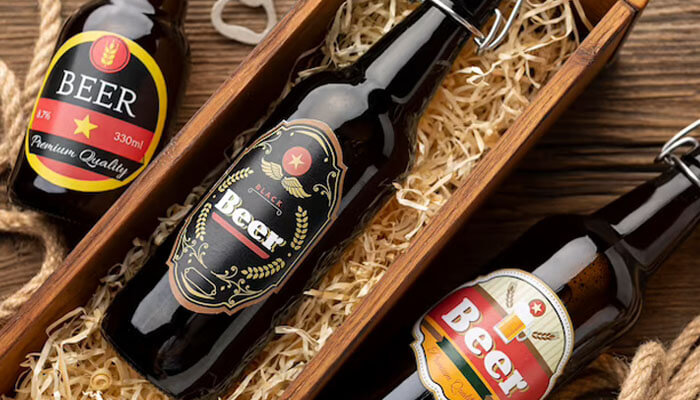For true beer enthusiasts, it is always craft beer season. Whether promoting a seasonal flavor or highlighting year-round products, the right craft beer label can help your business go above and beyond regarding customer satisfaction and demand. A well-designed beer label, such as Grogtag custom beer labels, is what attracts the buyer, and choosing the right design that holds all the elements of the labeling information may be a tedious task. Don’t worry if you’re having trouble creating a craft beer label. Here are some pointers to consider when buying custom beer labels for creating eye-catching craft beer labels to get you started.
1. Style and Imagery
Traditional beers have traditional labeling: one prominent color, a large name, and some subtle texture or abstract images for visual interest. However, with the rise of craft beer, custom beer labels have become an art form. We see everything from cartoon-like illustrations to hand-drawn masterpieces to photographs to extreme minimalism.
Your target audience should dictate your style: If you’re aiming for younger customers with your wild or experimental flavors, you might want an outlandish or trippy label. A minimalist label with no cartoon mascot will suffice if you want to appeal to a more refined audience.
You can choose imagery once you’ve decided on your style. How do you go about doing that? Determine what makes you unique. Do you use any particular ingredients? Display it to them. Do you have a kitty who has become the brewery’s unofficial mascot? Include him in the design. Using a specific cultural brewing technique? Use design elements from the same region. Do you have a clever name? Play it up.
2. Decide on Bottles or Cans
Before considering the craft beer label, consider whether you’ll use beer bottles or cans. It’s no surprise that your can or bottle label sells the product, given that these are the two containers you could use to sell craft beer in stores.
Both have advantages and disadvantages. Bottles are traditional, but they have a limited surface area. You can only use the label for working space because you can’t cover the entire bottle. Cans, on the other hand, allow you to cover their entire surface area with your design. In any case, both options are excellent for promoting your brand.
3. Label Shape and Size
Beer label shapes are a consideration unique to the industry. Do you want a standard shape and size or something unique (die cut) to make your bottle stand out but may raise the printing cost? Do you want a separate neck, front, and back label or a single label that wraps around the body? Do you want to use standard paper or something special with a transparent background?
To make these decisions, consider your budget and decide what is most important to you. Beer bottle label sizes range from 2.75″ x 4.25″ to 3.25″ x 4″ and 5″ x 2.”
Another factor to consider is the bottle size: 12 oz. standard, 20 oz. Bomber, or some custom container of your design. Even not knowing the size is insufficient; there are also variations in bottle shapes. Stubbies, longnecks, growlers, or even a custom shape like a cone are all options. Make sure you have all of this figured out before you begin designing so that everything fits together!
4. Theme
The theme of your label is very important. The appropriate theme will convey the appropriate aesthetic. And if you’re having trouble deciding on a theme, our team of experts can assist you in communicating in a powerful visual language.
5. Choose Some Readable Fonts
Believe it or not, the fonts you use are important as well! The right font can assist you in communicating the right message and developing the brand’s personality. You may be tempted to use unusual display fonts, but your efforts will be futile if the text is unreadable. Only when your customers can read your brand name and the rest of the words on your label will they be able to make an informed purchasing decision and remember your name!
6. Incorporate Beer Keywords
You can do a lot with the words on the label. Using beer keywords will assist you in properly branding your beer. It is also the most convenient way to reach your target customers. All you have to do is list and prioritize the best keywords that describe your beer. As a result, those keywords may be used on the label.
7. Find the Right Label Partner
When you’ve finished with the pointers above, it’s time to find the right label partner. Having the right label partner can assist you in creating a visually appealing beer label customized to your brand. Make certain that you hire the right partner.
Remember that convincing your audience to try your brand is difficult; you need a strong beer label. And we can assist you in creating a unique beer label that will make your brand stand out!
Bottomline
When designing a custom beer label, it is important to consider factors such as style, imagery, bottle or can choice, label shape and size, theme, readable fonts, and incorporating beer keywords. Each of these factors plays a critical role in creating a visually appealing beer label that stands out on the shelf and attracts the target audience. Choosing the right label partner is also important to ensure that the design is executed correctly. By following these considerations, you can create a unique beer label that captures the essence of your brand and helps it stand out in the competitive craft beer industry.




